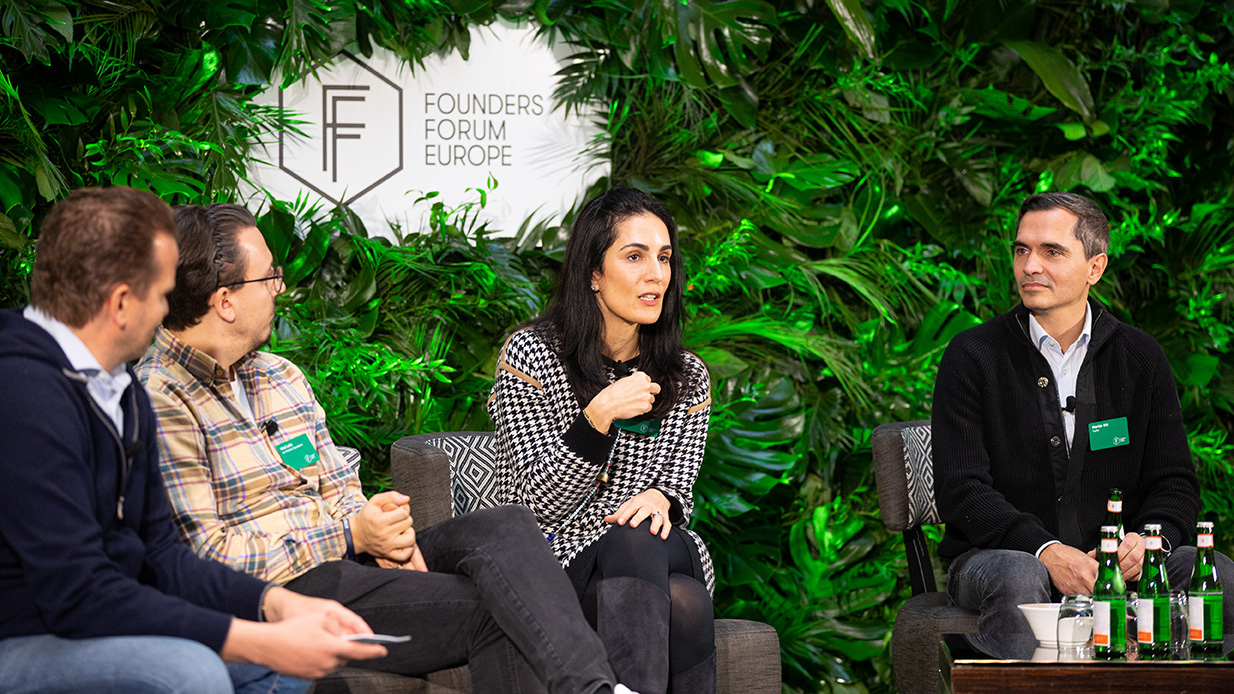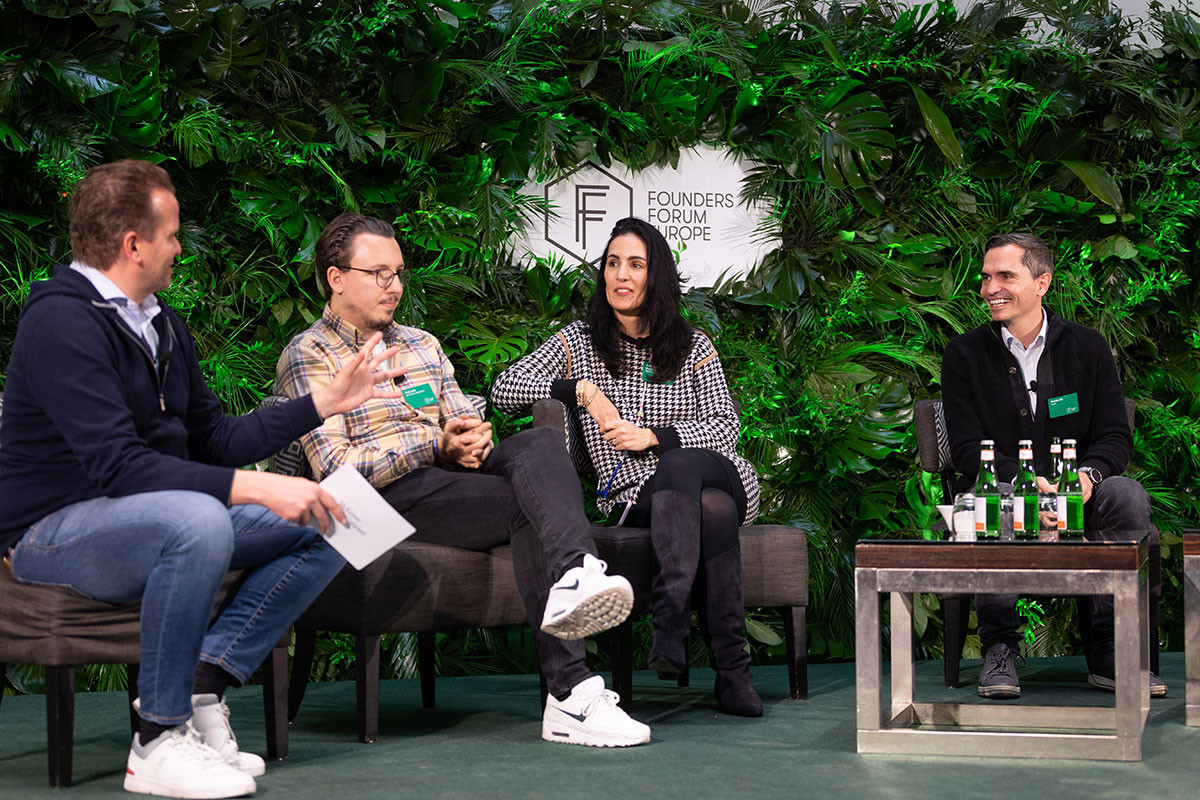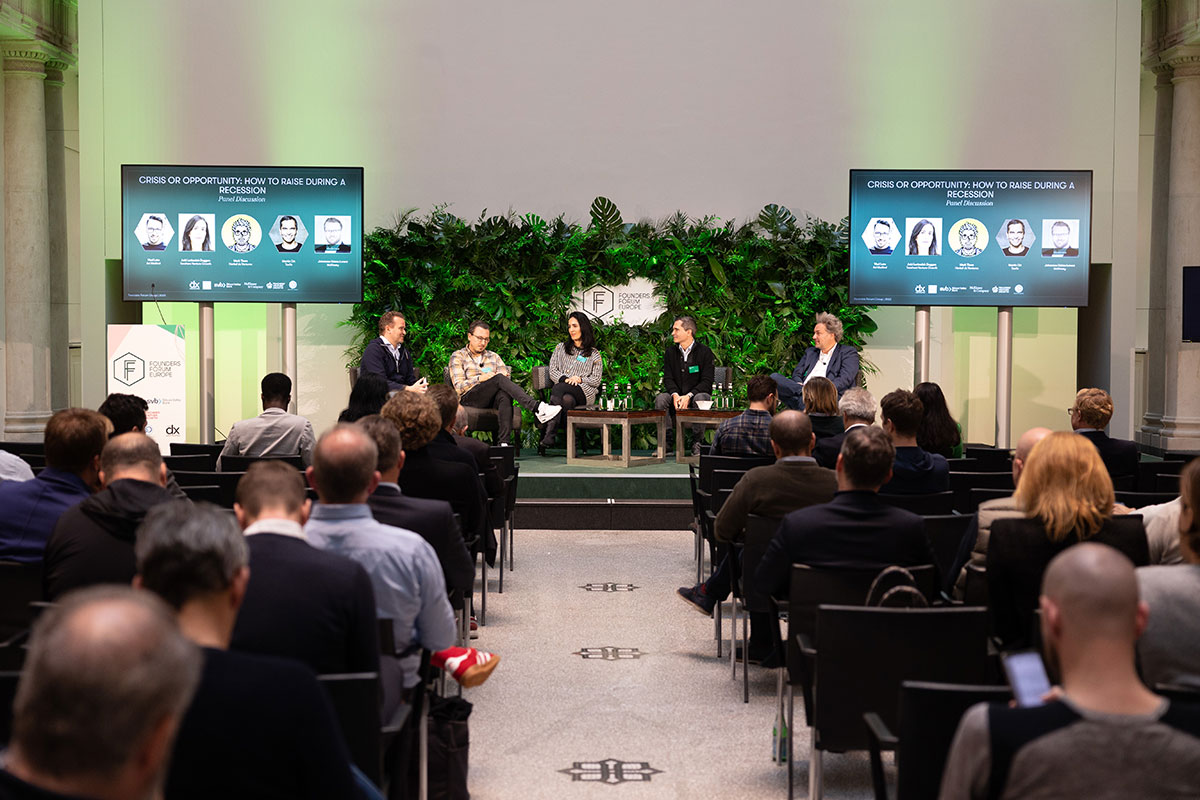With a global recession on the cards, founders and dealmakers would be forgiven for having a pessimistic view of fundraising and deal activity over the next 12 months. This may be especially the case for those who bear the scars of the 2008 global financial crisis, which triggered a decline in venture capital funding. But with the 2023 recession expected to be relatively mild and plenty of dry powder to leverage, there are reasons to be cautiously optimistic about the fundraising landscape in the coming year.
Thriving in a recession: How founders can find funding in tough times
Avid Larizadeh Duggan, Senior Managing Director of Teachers' Venture Growth, was invited to the Founders Forum event in Berlin to discuss the challenges and opportunities of fundraising during a recession. In a panel discussion hosted by Johannes-Tobias Lorenz, Senior Partner at McKinsey, Avid shared her advice and expertise with the founders and dealmakers attending this exclusive event.

Severity of the 2023 recession
Many economists believe that the length and depth of the next recession is likely to be mild, especially when compared with the recession of 2007-08. The 2008 recession was caused by lax lending practices and the collapse of the subprime mortgage market. There were few warning signs, and the crisis turned out to be the worst in nearly eight decades.
This time around, the economic slowdown has largely been caused by a supply-demand imbalance. The pandemic hit the world's supply of goods, whereas demand kept rising and, in turn, fueled inflation. A recession in 2023 would likely be the most anticipated in history. It has been forecasted for several months, giving central banks and businesses ample time to prepare. The labour market remains strong and financial institutions are well capitalised.
Venture capital funding
While we do not yet know exactly how the recession will impact venture capital funding, Morgan Stanley's analysis of the 2000 and 2008 recessions provides some useful context. Its research shows that the length of time between the peak and trough of the fundraising cycle was roughly 20 months in each case.
In the current cycle, the funding peak occurred in the fourth quarter of 2021. If we consider that most companies raise enough to give themselves 18 months before they need to start raising again, and then add another six to 12 months of runway extension, which most CEOs have implemented, then we should see companies back raising in the second half of 2023, or Q1 2024 at the latest.
European investment landscape
Another reason for optimism: the amount of dry powder in the venture capital industry is at an all-time high. Data from PitchBook shows that as of the end of June 2022, there was roughly $290bn of capital sitting on the sidelines and waiting to be invested in existing or new companies. This suggests investment could continue to be high in 2023 and 2024, despite the economic uncertainty.
Europe looks set to receive a large share of this investment. European startups accounted for 20% of global funding in 2022, up from 10% in 2015, according to Dealroom.co. In the first three quarters of 2022 alone, Europe saw over 9,000 deals worth a total €76bn. At the current pace, deal value could surpass the €100bn mark for the second year in a row, according to PitchBook.


Staying ahead of the game
Nevertheless, with deal volumes unlikely to match 2021's record numbers, founders will need to step up their game and pay attention to the metrics if they are to attract investors. The error margin for investors is much slimmer, so they will be looking for companies with a focus on cost and sustainability.
Valuations are going to look very different from how they were a year ago. The average multiple of a cloud company over the past ten years is roughly between 9x and 10x. Today, the top quartile of cloud companies are trading at a 70% premium to everybody else, at roughly 9.2x, so back at that ten-year average.
Late-stage investors would expect a private company to trade at a premium because of the growth potential. So instead of 10x, they might expect 12x or 15x.
Investment opportunity
It's important to remember that some of the best companies are born in times such as these. When we emerge from the crisis, the world will look different for a longer period of time than it did after the 2000 or 2008 recessions. This is because of the systemic effects of the war in Ukraine, the energy crisis, supply chain challenges, and a focus on onshoring, all of which are leading to higher inflation and higher interest rates. But entrepreneurship and grit thrive in adversity, as we see from the continued volume of early funding rounds.
While money is becoming increasingly expensive, well-run technology companies with strong cultures and a focus on short-term sustainable unit economics will come back to a market flush with capital and eager to invest. In Europe, autos, energy, telcos, pharma, and financials will have over $1trn of free cash by 2024 to distribute and modernize via M&A and investments, according to Morgan Stanley.
Valuations will look more like the average of the past ten years, leaving room for a handful of exceptional outliers. But many will face the equivalent of short-term down rounds, which will enable them to survive and ultimately thrive as leaders in the long term.
The absence of free money reduces the error margin for entrepreneurs and investors, leading to a flight to quality in both groups: the best will shine and the average will be wiped out. For the great, this is an incredible time of opportunity.
Looking for an agile, global investment partner?
Find out about what Teachers’ Venture Growth can do for you.


